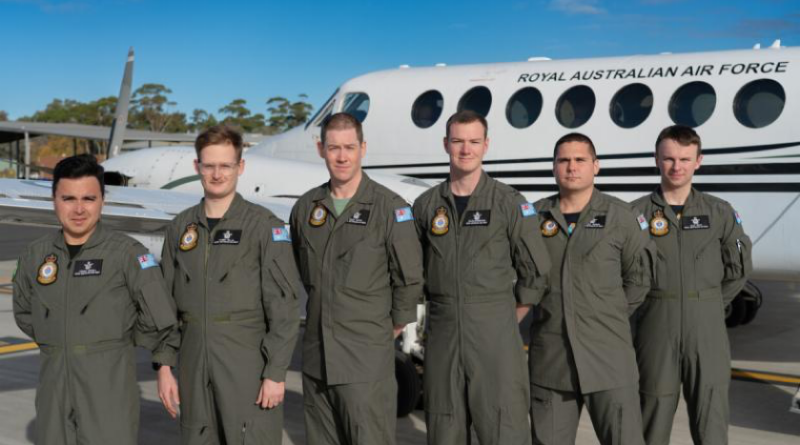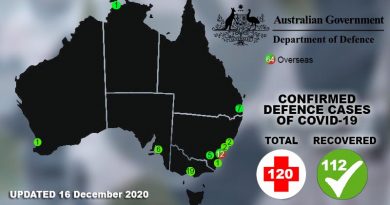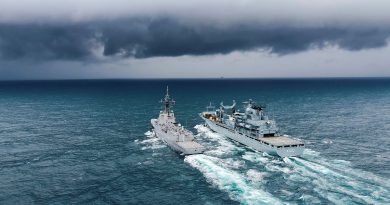Enhanced training sets aircrew up for success
Share the post "Enhanced training sets aircrew up for success"

The Air Mission Training School (AMTS) at RAAF Base East Sale has marked a significant milestone in the training of Airborne Electronics Analysts (AEA), completing an inaugural airborne operations flying phase for ab-initio trainees.
CAPTION: Airborne Electronics Analysts students, from left, Aircraftman (AC) Andres Anzola Sanmiguel, AC Jayden Fellas, AC Colin Curtis, Leading Aircraftman Dylan Livingstone, AC Andrey Ozborn and AC Clay Smith. Story by Flying Officer Rosetta Gigliotti. Photo by Sergeant John Hawxwell.
Conducted in close partnership with 32 Squadron, the training phase involved AEA trainees taking to the skies aboard the King Air 350, gaining critical exposure to maritime flying profiles and dynamic airborne crew environments.
Each trainee undertook at least two sorties, many for the first time experiencing the demands of operating on board a RAAF aircraft. The aim: to develop foundational airmanship skills and prepare trainees for their eventual operational conversion onto advanced platforms such as the P-8A Poseidon, E-7A Wedgetail, or MC-55A Peregrine.
Commanding Officer AMTS Wing Commander Tarek Tabbouche said early airborne exposure was important for shaping future aircrew readiness.
“Developing airmanship and an understanding of the dynamic nature of flight operations are critical skills for all aircrew,” Wing Commander Tabbouche said.
“By embedding airborne training into the AEA course at AMTS, we’re setting our trainees up for operational success across Surveillance and Reconnaissance Group platforms.”
The longstanding relationship between AMTS and 32 Squadron proved instrumental in bringing this new phase of training to fruition. 32 Squadron, as the lead operator of the King Air 350 fleet, has extensive experience in supporting mission aircrew training. Integrating AEA training into this existing framework was a natural evolution.
Commanding Officer 32 Squadron Wing Commander Marcus Watson said mutual benefits arose from the program.
“For 32 Squadron, training alongside AEA trainees provides an opportunity for junior pilots to develop leadership and crew coordination skills in a real-time mission environment,” Wing Commander Watson said
“It’s a valuable step in growing captaincy and team cohesion.”
The integration of enlisted and commissioned aircrew within the AMTS environment is a key progression in the school’s training philosophy. Crew-based events and joint airborne training are designed to build trust and teamwork early in the aircrew pipeline.
Wing Commander Tabbouche added: “This integrated approach ensures that when our aircrew are called upon, they’ve already established the teamwork and mutual confidence essential to mission success.”
Looking ahead, AMTS plans to expand and refine the airborne training phase, establishing a sustainable model to enhance the future readiness of AEA graduates, ensuring they are mission-ready from day one of their operational postings.
.
.

.
.
Share the post "Enhanced training sets aircrew up for success"





